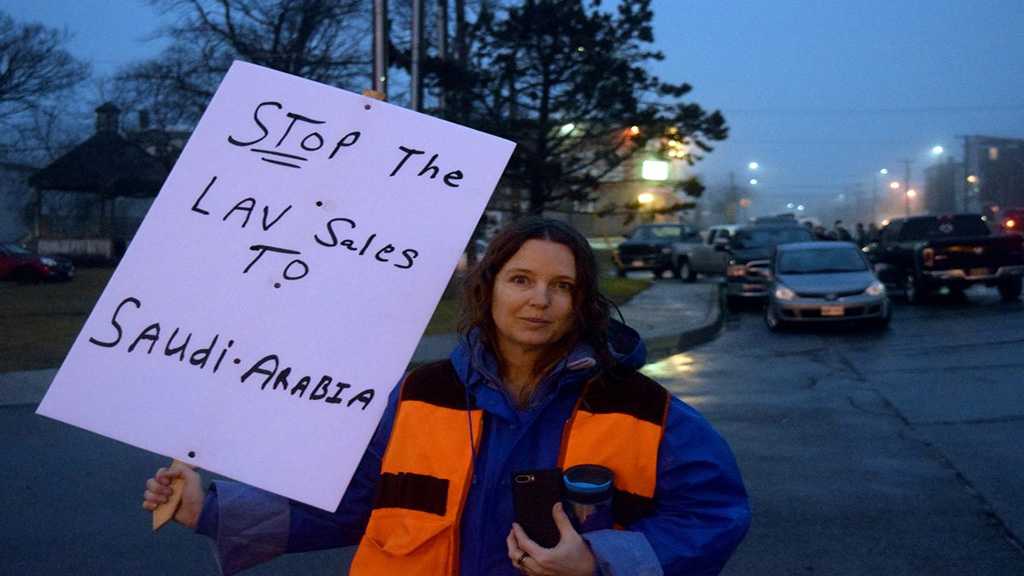Canada: LAVs Shipped from Saint John to Saudi Arabia despite Protests

Local Editor
Light armored vehicles destined for Saudi Arabia were loaded onto a cargo ship in Saint John on Sunday, a day after longshoremen refused to cross a protest line.
Despite bad weather, protesters gathered near the port entrance at 7 am on Saturday. More than a dozen protesters held signs and passed out pamphlets detailing concerns about the Saudi-led war in Yemen, which the United Nations called the world’s worst humanitarian crisis. Protesters hoped to prevent the shipment.
Holding placards and illuminated only by the port’s flood lights, they marched back and forth as the longshoreman parked their cars and waited before leaving two hours later, forfeiting their day’s wages.
A day later, however, the LAVs were loaded onto the Bahri Yanbu and the ship left the port. Pat Riley, spokesman for the International Longshoremen’s Association Branch 273, said he was trying to confirm the work was done by the union but didn’t respond before deadline.
He said ILA Branch 273 could face repercussions from their employer for its decision not to cross Saturday’s protest, even though the combat vehicles, some of which have been used in Riyadh’s war in Yemen, were eventually transported.
“We recognize that every time someone puts up a picket line and we don’t cross it, the guns are pointed at us,” Riley said. “It’s very legal for people to protest and put up information protest lines wherever they deem they want to, but it’s the workers who face the possible legal repercussions. And we’re prepared to do that.”
Riley said he has been contacted by the union’s employer, Port Saint John, requesting a meeting as soon as possible. When asked if the port will pursue legal action, fines or other punishments against the longshoremen, spokeswoman Paula Copeland declined to comment.
Despite the LAVs being shipped, the union has a history of refusing to move what it deems “hot cargo” – or goods intended for immoral purposes, including refusing to move military equipment destined for the Middle East during the Iraq War in 2003.
Source: Globe and Mail, Edited by website team
Comments
- Related News




